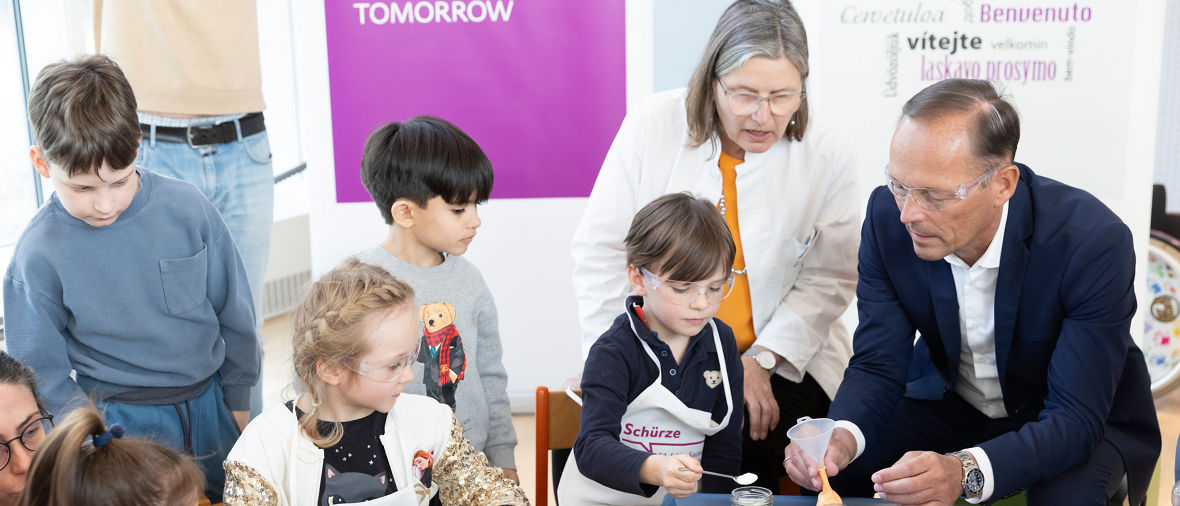How can a lava lamp be built using a little ink, water, oil, a flashlight, and vitamin tablets? How are colors created? And how are diapers actually able to absorb so much liquid? Evonik’s Young Spirit sponsors answer all these questions during their regular visits to kindergartens and elementary schools. They organize experiments for the boys and girls and introduce them to natural sciences through play. In numerous everyday experiments, the children investigate various phenomena and experience how exciting science can be.
Evonik’s Young Spirit initiative has been going for 15 years. “In some cases, natural sciences are only taught from seventh grade. Through Young Spirit we want to get the children interested in chemistry and physics from an earlier age,” said Andrea Vollmer from the Employer Branding team who coordinates the initiative. “At the same time, we give our employees the opportunity to make a personal commitment alongside their job. Any Evonik employee can become a Young Spirit sponsor and get involved on a voluntary basis. Their professional background is irrelevant. Before the employees have their first assignment, they receive training so that they can carry out the experiments age-appropriately.
Barbara Brinkert and Karen Sprutta are not only mother and daughter; they also often work together as Young Spirit sponsors. Barbara Brinkert has been part of the initiative since its foundation and became a Young Spirit sponsor through her daughter, who was in kindergarten at the time. Today Karen Sprutta herself works for Evonik and is also active in the Young Spirit initiative. “When I was in junior high, I used to help my mother prepare for her Young Spirit assignments. After I started my vocational training at Evonik, I became a Young Spirit sponsor myself,” said Karen Sprutta. In their hometown of Haltern, the two of them spend several school periods or even entire project days at different schools several times a year. They usually bring everyday items with them such as food coloring, baking powder, felt-tip pens or sugar, using these materials to conduct exciting experiments and encourage the children to participate. “It is always nice to see how curious the children are and how much they learn,” said Barbara Brinkert. And often it is much easier than expected: “The children are always fascinated any time we build a lava lamp. To do this, we fill a large glass with colored water and oil and illuminate the glass from below with a flashlight. Then comes the show-stopper: An effervescent tablet thrown into the glass transforms it into a lava lamp.”
